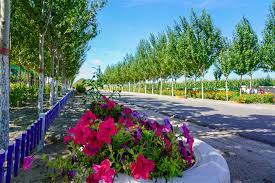Data has shown that the total mileage of rural roads in China increased by more than 900,000 kilometers during the period from 2011 to 2021 to reach 4.5 million kilometers by the end of 2021.Over the past 10 years, a rural road network has taken shape, making 1,040 townships along with 105,000 administrative villages accessible by paved roads.
High-quality rural roads that are properly built, operated, managed and maintained have played a very important role in helping farmers in China shake off poverty and achieve prosperity.Yu Yanqia is a young woman of the Lisu ethnic group in Bula village on the mountains along the precipitous Nujiang River Grand Canyon in Fugong county, Nujiang Lisu Autonomous Prefecture of southwest China’s Yunnan Province. She has witnessed remarkable achievements in her hometown’s transport infrastructure over the past decade.
Fifteen years ago, a picture of Yu crossing the Nujiang River by zipline on her way to school drew nationwide attention.
Thanks to the help received from various sources, the local governments raised donations of more than 1 million yuan (about $143,639) and built three bridges over the Nujiang River, including one near Yu’s school.
“At eight years old, I learned to use a makeshift zipline to get to my school. Back then, I thought people in the rest of the world crossed rivers like residents in our village until I walked on the bridge for the first time,” said Yu, who is now a medical worker at the People’s Hospital of Nujiang Lisu Autonomous Prefecture after she graduated from Kunming Medical University.
Yu Youguang, an engineer of the transport bureau of Fugong county, participated in the construction of those bridges in 2007. Yu, once a local designer of ziplines, became busier after China launched a program to replace ziplines with bridges in 2012.”Among the first batch of bridges built to replace ziplines, seven bridges were in Fugong county,” said Yu, adding that the county is now home to 16 similar new bridges.
In the past 10 years, the central government and local governments have invested about 3.4 billion yuan to replace ziplines with bridges, and built 309 such bridges and 796 kilometers of roads linking these bridges. The program has benefited nearly 1.7 million people in some 1,168 administrative villages and 4,000 natural villages.
Over the past decade, China has accelerated the building of a comprehensive and multidimensional transport network. The country has built the world’s largest high-speed railway network, expressway network and world-class port clusters, opened air and sea routes that reach all parts of the world, and set up an integrated transport network exceeding 6 million kilometers.













